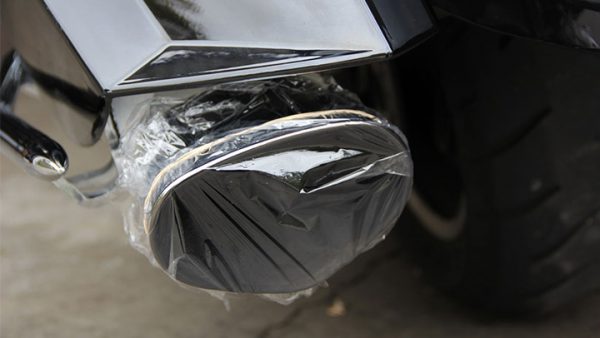 Not every Indian Motorcycle® rider is lucky enough to live where the climate lets you ride year-round. For snowbelt residents who live amid snowy, icy streets that are unridable in winter, here’s how to prepare your Indian® motorcycle for winter storage. The goal of winter storage prep is to protect the bike and have it ready to start and run once spring arrives.
Not every Indian Motorcycle® rider is lucky enough to live where the climate lets you ride year-round. For snowbelt residents who live amid snowy, icy streets that are unridable in winter, here’s how to prepare your Indian® motorcycle for winter storage. The goal of winter storage prep is to protect the bike and have it ready to start and run once spring arrives.
Many Indian Motorcycle dealers will prep and store your bike for the winter. This frees up your garage space at home, and it lets you rest easy knowing your bike was professionally prepped for winter and is being stored properly. Plus, these dealers commonly include pre-ride service and prep when you pick up your bike in the spring.
If you do the storage prep work yourself, rely on your dealer for supplies you’ll need such as oil, fuel stabilizer, cleaning solutions, covers, and more.
Protect the Engine & Fuel System
After your final ride of the season, fill the fuel tank with non-oxygenated fuel and add Indian Motorcycle fuel stabilizer to the tank. Run the engine briefly (1-2 minutes should do) to get the stabilizer mixed among the fuel. Having the tank full of fuel minimizes the chances of condensation.
Change the oil and oil filter. You’ll remove impurities and will have the bike ready to start and run in the spring.
Remove the spark plugs and add 2 teaspoons of oil to each cylinder, or spray fogging oil in the plug holes. With the plugs out, cover the plug holes with cardboard or a rag and crank the engine over to coat the cylinders with protective oil.
Trickle Charge the Battery
If you want to keep your battery charged all winter, disconnect the cable to the negative battery post and attach the trickle charger. A proper trickle charger will charge the battery fully, then stop the flow of electricity until the charge eventually drops slightly, triggering the charger.
If you have a relatively new, reliable battery, it’s not absolutely essential to keep it fully charged all winter. It will recharge quickly in the spring and provide reliable starting. If you don’t use a trickle charger, consider charging the battery for a couple of hours one day between Christmas and New Year’s Day, and again on Super Bowl Sunday.
Protect the Bodywork
Wash and wax the bike. You’ll be removing dirt and oils the bike collects from roadways, and you’ll leave it protected for the extended storage period.

Pest-Proofing
Cover the exhaust pipe outlets with plastic bags and place a rubber band over the bags to hold them in place. This is a time-tested way to keep unwanted pests (mice, etc.) from climbing inside this cozy (to them) space.
To further pest-proof the bike, put some dryer sheets in the air box and under the seat. If you have an Indian bagger or touring bike, also insert dryer sheets in the fairing and the saddlebags.
Elevate the Tires, Lower the Pressure
Now roll your motorcycle into its winter parking place – ideally, in the garage or another protected enclosure. It’s a good idea to raise the tires off the concrete floor, rolling them onto pieces of wood, for instance, to help prevent flat-spotting.
You might also want to lower the tires’ air pressure to about half their recommended pressure. Why? So you don’t give in to impulse on what seems like a nice January day and take the bike out onto the road when there are two months of winter remaining. (By resisting temptation, you’ll keep the bike stored and protected.) Plus, by intentionally lowering the pressure, you’ll know you need to set the tire pressure correctly in the spring.

Cover It and Plan Some Trips
Put a bike cover over your motorcycle and cinch it down. Covering the clean bike keeps the bike from getting dusty and dirty, and minimizes condensation on surfaces. But don’t try to seal the bike inside a non-breathable (i.e., plastic) cover, or you could promote unwanted condensation and rust.
Attach a pre-ride checklist to the bike’s cover so you remember what you need to do before riding in the spring: Remove the exhaust tip covers, remove the dryer sheets, and set the proper tire pressure. The fuel stabilizer will burn with the fuel.
A properly prepped motorcycle is clean and protected for winter storage. With your bike securely tucked away form winter, go plan some great rides for next year, and count the days until you can ride your motorcycle next spring.